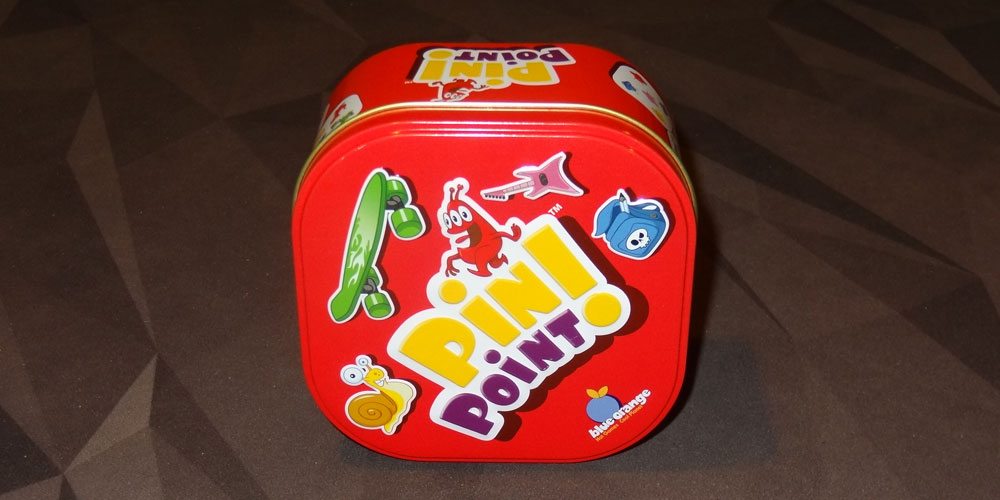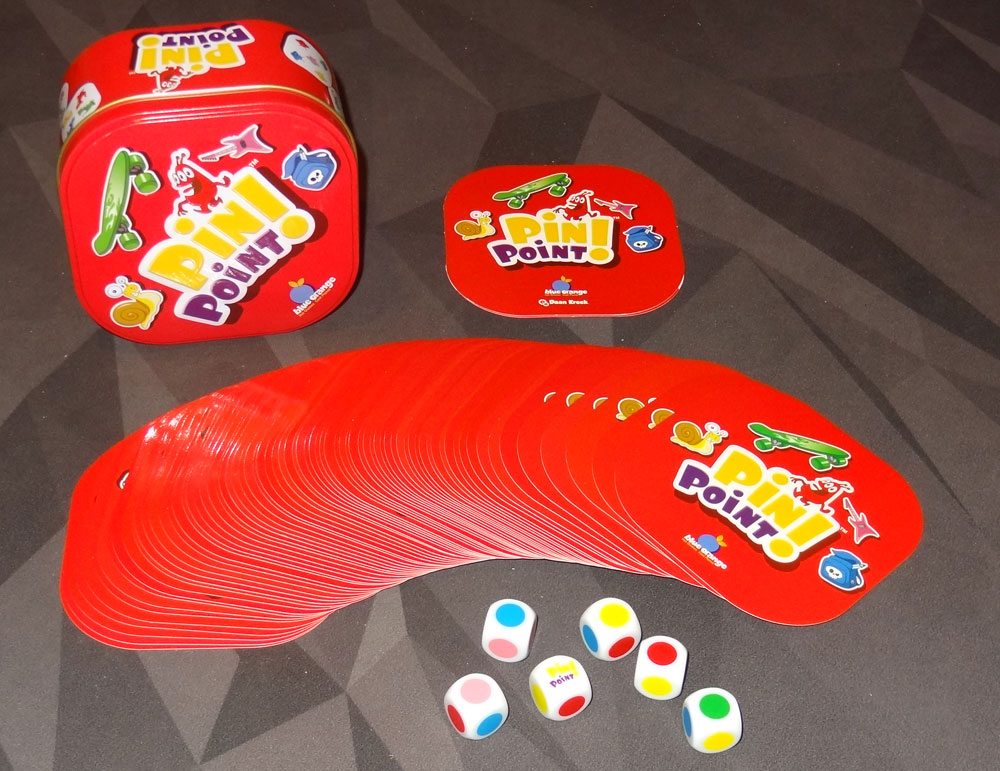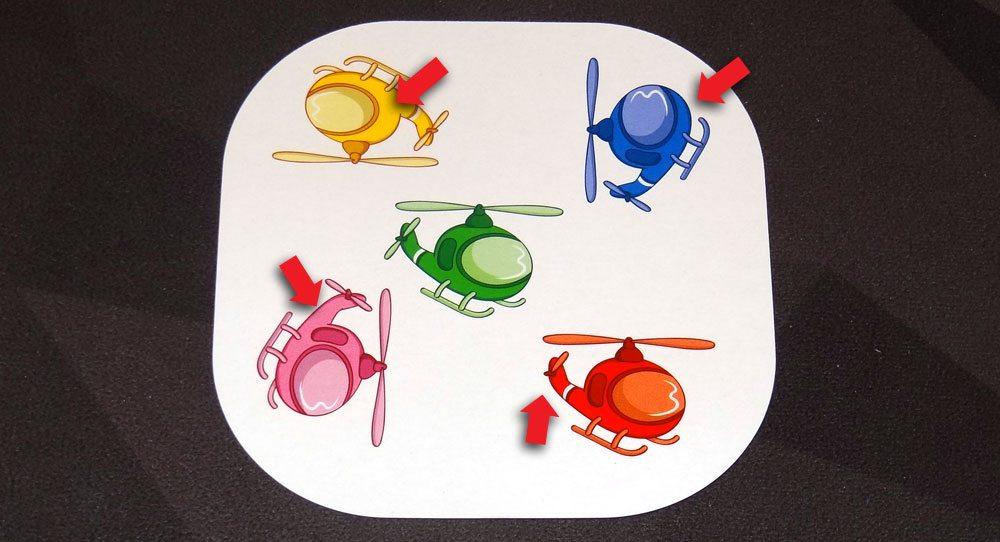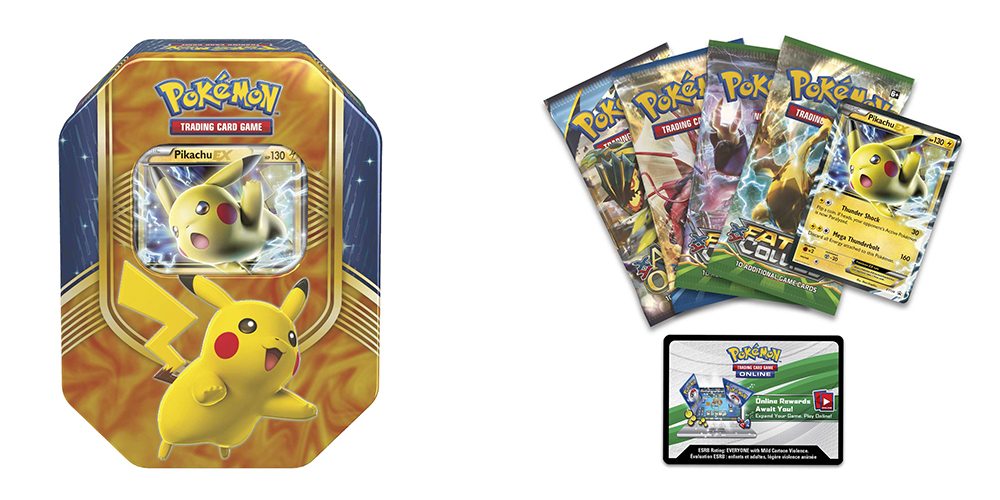
Blue Orange Games is the publisher of Spot It!, a game of speedy observation. There are now many different flavors of Spot It! available, and it’s a popular game especially for younger kids. Blue Orange has a few more games now involving quick inspections, and I’ve gotten to try a few of them recently. Today’s title: Pin Point!
At a glance: Pin Point! is a game by Daan Kreek for 1 to 6 players, ages 7 and up, and takes about 10 minutes to play. It retails for $15.99 and is available in stores and online. The concept is slightly trickier than Spot It!, which explains the age recommendation; younger kids will be able to spot the differences but might need a little help understanding how to interpret them.

Components
- 72 Cards
- 6 Dice
The cards are large square cards with rounded corners: each one is about the size of a coaster, and has four or five images on it. The illustrations look a bit like what you’d expect to see on Spot It! cards. The items will come in green, pink, blue, red, and yellow, and each card shows different versions of the same item.

The dice are small six-sided dice that have colored circles matching the picture colors, plus one side with the Pin Point! logo on it.
The whole thing comes in a metal tin—it’s a bit bigger than the Spot It! tin, so it’s not quite as pocket-sized, but it’s still small enough to be easily portable. I do wish the tin were a little shorter, though, because there’s more space than needed for the cards and dice.
How to Play
The object of the game is to find the “original” on each card—you play to a set number of points.
To play, simply shuffle the deck of cards, and then flip over one card at a time.
Each card shows four or five of what appear to be the same object in different colors—but closer examination shows small differences between them. The idea is that if a difference only appears on one image, then that one’s a variation. Eliminate all the variations, and the one that’s left is the original.

For instance, in the card shown above, you can see that the yellow helicopter is the only one that doesn’t have a door on the side—so it’s a variation. The blue one is missing a skid, the pink one doesn’t have stripes on the tail, and the red one is missing half of its tail rotor. Therefore, the green one is the original.
Players simultaneously look for the original—whoever spots it first calls it out, and (if correct) takes the card as a point.
There are a couple of variant rules, too, which is what the dice are for.
For instance, if you want to play cooperative (or solo), you can use the dice to track which variations have been eliminated, setting the dice to the right faces. You can take turns eliminating variations this way.
Or, you can play a version in which everyone gets a chance to find the original (rather than just the fastest player). Each player gets a die, and when you think you’ve found the original, turn your die to the right face and call out your number—first, second, etc. After everyone has chosen a color, the dice are revealed. The first three players with the correct answer get points: 3, 2, and 1. Take cards from the deck to serve as points.

The Verdict
The first “find it fast” game I can remember playing was SET, which I was introduced to in college and quickly became addicted to. For a while, I hadn’t seen too many other games of that genre, and SET still ranks highly on my list. Ghost Blitz is another fun variation, and is one that can make players say their brains hurt.
Pin Point! falls somewhere between Spot It! and Ghost Blitz on the complexity scale—you’re looking for differences, but also doing a little bit of pattern matching. Once you’ve spotted a difference, you have to look at the other images to figure out which one is a variation, and then you have to keep track of 3 or 4 variations to pin down the original. Remembering which things you’ve eliminated isn’t a huge mental strain, but for younger kids it can be a challenge to do so quickly.
One thing I do like is that there are multiple versions of many of the images, so that you can’t just remember a particular image from an earlier play. Maybe the original guitar was green this time, but it could be pink on another card.
Unfortunately the game doesn’t lend itself to exciting photos—it’s just a bunch of people sitting around looking at a card—but competition can get quite fierce. I do have to watch that my kids don’t stick their faces so close to the card that they’re blocking other players, but some of the differences are pretty small. It’s not a game I would recommend for players with poor vision. With an opaque overhead projector, though, it could make for a pretty cool classroom game.
Overall, I would say Pin Point! isn’t at the top of my “find it fast” list, mostly because I’m not a huge fan of the visual style, but the gameplay is interesting and makes for a nice variation if you’ve been playing a whole lot of Spot It! and want something new. Blue Orange Games are widely available in game stores and other major retailers, so you may be able to, uh, spot it just about anywhere.
Disclosure: GeekDad received a review copy of this game.



